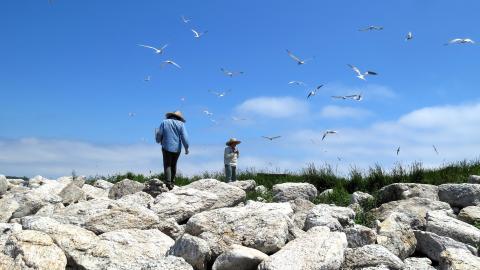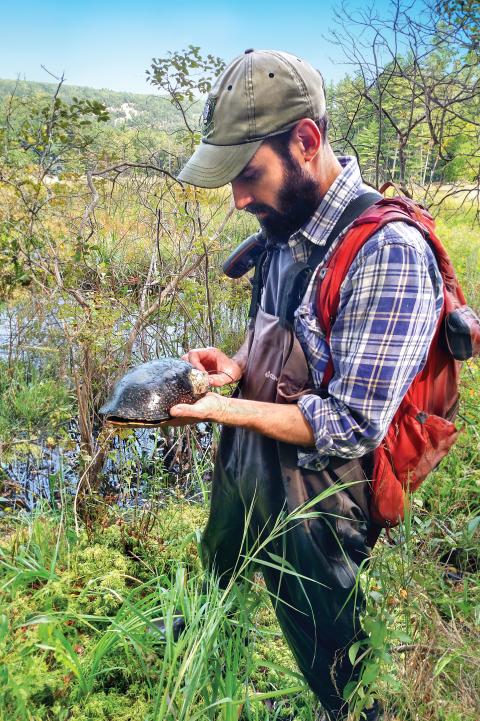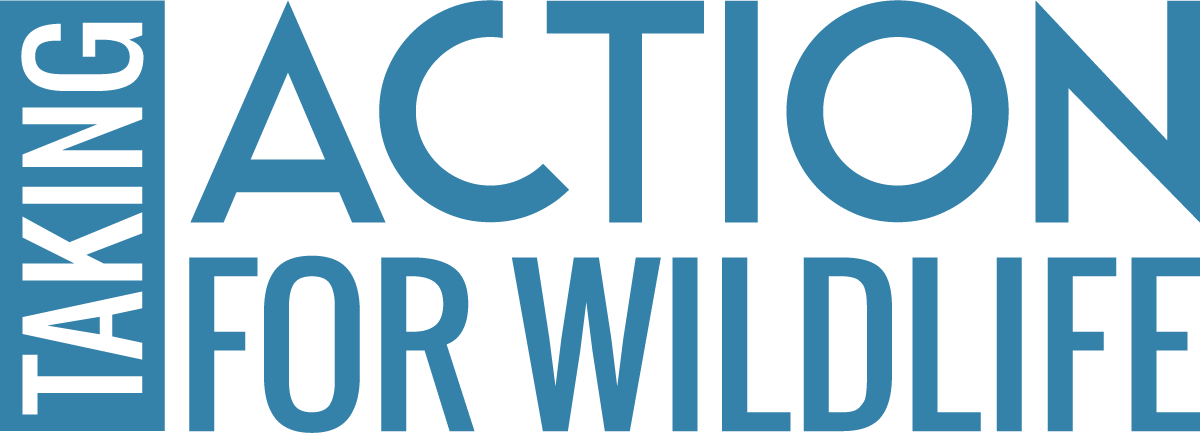The revision of the New Hampshire Wildlife Action Plan is currently underway. Every 10 years (since the first Wildlife Action Plan, completed in 2005), the New Hampshire Fish and Game Department, led by the Nongame and Endangered Wildlife Program, revises the state’s Wildlife Action Plan, an assessment of the health of New Hampshire’s wildlife and habitats, and a blueprint for conserving them. The New Hampshire Wildlife Action Plan lays the framework for protecting wildlife and habitats that are facing threats, and defines specific actions that can be taken to ensure common species remain common.
The plan provides a strategic vision for conserving New Hampshire’s most vulnerable wildlife species and habitats, so that individual citizens, communities, university researchers, biologists, land trusts, businesses, and other organizations can participate in conservation efforts in the Granite state. The 2025 revision builds upon past successes of the last two Wildlife Action Plans and ensures that New Hampshire has a wildlife conservation roadmap for the next 10 years that allows us to work towards the goal of conserving New Hampshire’s wildlife and landscapes, so they can be enjoyed for many generations to come.

Biologists collecting data on nesting populations of common and roseate terns on the Isle of Shoals. The Shoals Marine Laboratory, in partnership with New Hampshire Fish and Game Nongame Program and the Department of Natural and Cultural Resources, monitor these two Species of Greatest Conservation Need annually, collecting data on nesting success and managing nesting habitat for both species. Photo by Mike Marchand, NHFG.
Since 2005, some species have recovered while others now require new conservation actions; thousands of acres of wildlife habitat have been protected while new threats have emerged; and conservation partners across the state have implemented hundreds of actions identified in the New Hampshire Wildlife Action Plan, and are ready to continue their work. Wildlife Action Plans were created to be dynamic, adaptable frameworks for tackling the most relevant challenges affecting fish and wildlife populations. For this reason, every 10 years, New Hampshire undergoes the two year long process of revising the Wildlife Action Plan. New Hampshire Fish and Game, along with the public and stakeholders across the state, including wildlife experts, New Hampshire Audubon, Natural Heritage Bureau, land managers, non-profit conservation and education organizations, land trusts, communities, interested citizens, and many more, work to update the Species of Greatest Conservation Need list, assess current habitat conditions, analyze the threats facing these species and habitats, and design the needed conservation actions.
The first step in the Wildlife Action Plan revision process is the selection of Species of Greatest Conservation Need, which are the foundation of the Wildlife Action Plan. Species of Greatest Conservation Need are those New Hampshire species that are most at-risk—they are experiencing declining numbers, loss of habitat, and / or a variety of other threats such as disease, development, and pollution. The Species of Greatest Conservation Need list should be inclusive of the full diversity of species in New Hampshire. By identifying and protecting Species of Greatest Conservation Need and their habitats, all of New Hampshire’s species can thrive.

A Blanding’s turtle, a Species of Greatest Conservation Need, is fitted with a radio transmitter by NH Fish and Game Biologist, Josh Megyesy. Telemetry studies allow biologists to identify, manage, and protect high quality turtle habitats. Photo by NHFG Staff.
Although the revision process is still in the early stages, exciting updates are already underway. For the first time, marine fish and plant species are included on the proposed Species of Greatest Conservation Need list. There are 16 new wildlife species on the proposed Species of Greatest Conservation Need list, including Atlantic Cod, Black-bellied Plover, Common Eider, and Lesser Yellowlegs. Two hundred plant species are listed as Species of Greatest Conservation Need—the inclusion of plant species in 2025 highlights the threats facing critical New Hampshire habitats such as salt marshes, floodplains, dunes, and pine barrens, as well as the ecological interconnectedness of wildlife and plant species in New Hampshire. The Species of Greatest Conservation Need list will provide a valuable resource for landowners, natural resource professionals, and conservation commissions who wish to manage and protect valuable wildlife habitat. The proposed Species of Greatest Conservation Need list can be viewed on the New Hampshire Fish and Game website (here).
In addition to updating the Species of Greatest Conservation Need list, NH Fish and Game Nongame and Endangered Wildlife program staff, in collaboration with conservation partners and wildlife experts, will assess and rank the full range of threats facing these species and their habitats and identify the conservation actions and strategies that can be taken to address these threats. Some of the threats that will be reviewed include land development, poaching, invasive species, pollution, and extreme weather. With this new list of threats and actions, communities, non-profits, individual landowners, and natural resource professionals will have the most up-to-date and relevant information and tools, enabling them to tackle the most pressing conservation challenges in the state.
New Hampshire Fish and Game and many partners in the state have been working for the last nine years to implement over 400 conservation actions laid out in the 2015 Wildlife Action Plan. This is done by partnering with towns, private landowners, land trusts, researchers, and conservation organizations in New Hampshire and across the Northeast to identify where action can be taken to improve and protect habitat for wildlife, monitor at-risk wildlife populations, and educate the public on the most prevalent conservation challenges in our state.
Just a few examples of conservation actions that New Hampshire Fish and Game and partners have been implementing from the 2015 plan are:
- Creating and maintaining nesting habitat for Blanding’s Turtles;
- Developing and implementing captive rearing protocols for White Mountain Fritillaries to conduct feeding studies;
- Monitoring and managing populations and habitats of Roseate Terns, Common Terns, and Piping Plovers; and
- Monitoring bat populations and developing management plans to support the recovery of bat populations that were decimated by White-Nose Syndrome.
In addition to species projects such as those listed above, New Hampshire Fish and Game and its partners have protected over 170,000 acres of high quality wildlife habitat since 2015. With 80% of conservation actions identified in the 2015 Wildlife Action Plan expected to be initiated or ongoing by 2025, this revision will provide critical updates to species and habitat statuses across the state and up-to-date conservation priorities for the next 10 years.
The revision process is a team effort—therefore, New Hampshire Fish and Game will be reaching out to and collaborating with a diverse set of stakeholders over the next year and a half. The goal is to make the Wildlife Action Plan as relevant and actionable as possible in order to ensure widespread utilization for the next 10 years. If you’d like to stay up to date on the revision process, the new Wildlife Action Plan Revision Webpage will be updated regularly.


